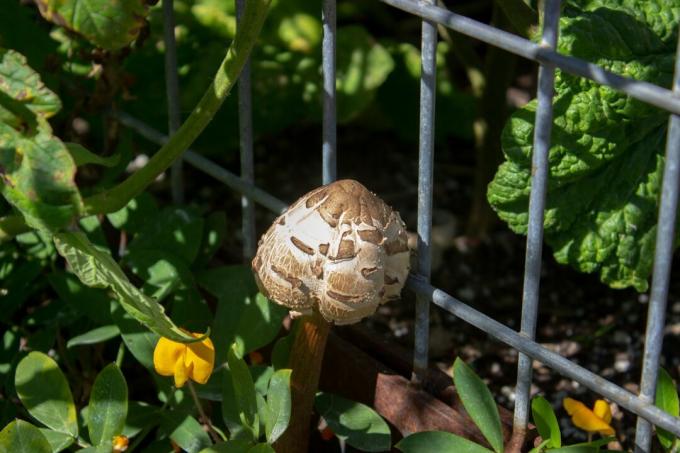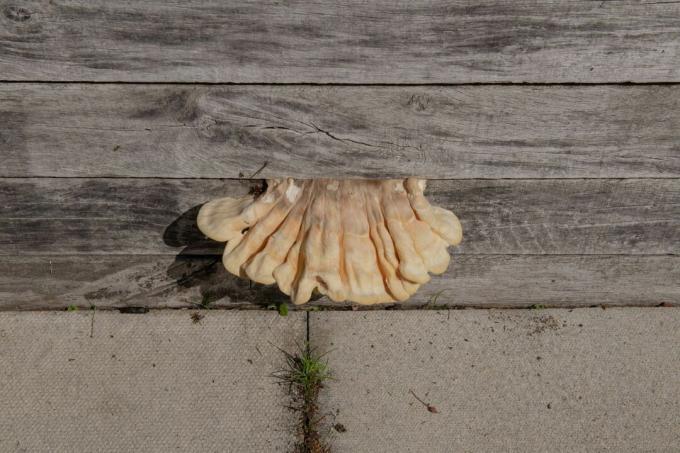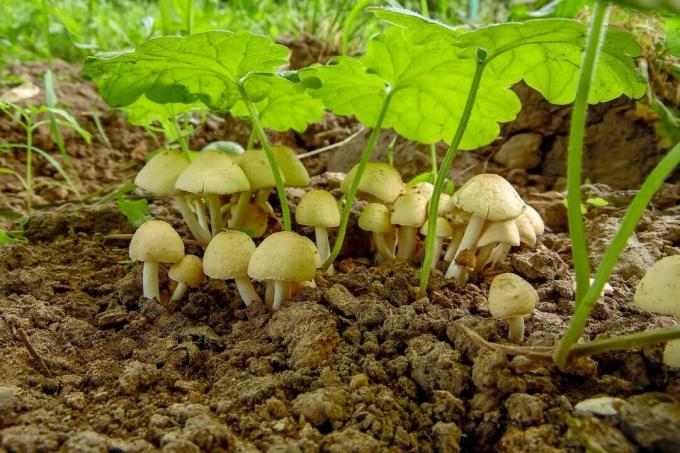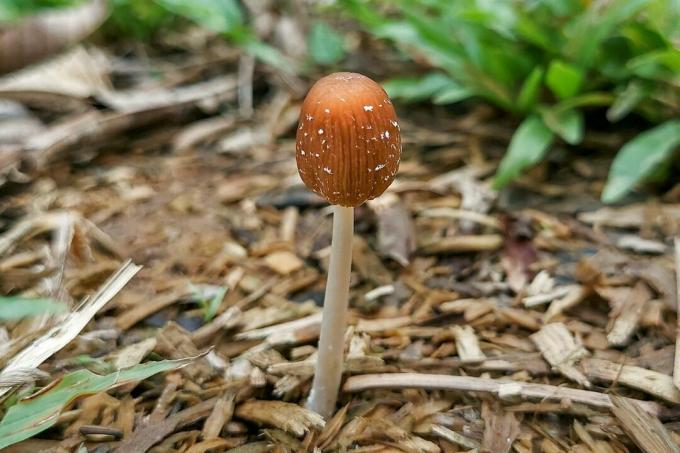Mushrooms in raised beds appear to be worse than they actually are. However, you should not eat the fascinating plants unless you have a thorough knowledge of the fungus in question.

Although fungal growth does not mean that your raised bed is infested with something harmful, a fungus outbreak does indicate possible care mistakes. That's why we're going to explain to you here why mushrooms grow in raised beds at all and how you can best deal with a fungal outbreak. To mushrooms in the garden outside of the raised bed you can continue reading elsewhere.
Why do mushrooms grow in raised beds?
In general, the microscopically small fungal spores and thus the reproductive units of the fungi are spread through the air. If the conditions are right, the spores germinate and form hyphae, which in their entirety are called mycelium. This describes the underground network of fungi. The "mushroom" as we see it superficially and possibly eat it is just the fruiting body. Different fungi rely on different conditions. For the majority of mushrooms, however, the following life requirements can be stated:
- Warm, moist location in semi-shade
- Humic soil with acidic pH

The demands on their habitat lead us to the causes of fungal growth in your raised bed.
Causes of fungi in raised beds at a glance:
- Waterlogging and generally high humidity is not tolerated by most plants, as this can lead to root rot, among other things. The reason is usually an impermeable subsoil, which means that the actually air-filled pores between the soil particles are constantly filled with water if the soil is watered too much. In the absence of oxygen, fungi have a clear advantage over plant roots - most plants depend on adequate ventilation of their roots, without which root cells die.
- substrate: Plant substrates often have a high proportion of organic substances such as wood fibers. This is by no means bad, but fungi are often specialized in certain trees and growth in their dead wood - wood fibers in the substrate are then a good breeding ground for them.
- Acid soil: If you spot fungi in your raised bed, you can almost assume that your soil is rather acidic - most fungi prefer a pH value between 3.5 and 5.

How to grow mushrooms in raised beds determine? Correct fungal identification is a challenge even for experts. Similar to a plant identification, all fungal elements must be examined - color, Occurrence, location, shape of the fruiting body, whether the mushroom has lamellae or a sponge and much more more. Therefore, the following applies: Mushrooms that you cannot classify 100% should not be eaten or processed, as they could be very poisonous mushrooms.
A service that is now becoming rare is the identification of mushrooms by a mycologist, to whom you can bring your own mushrooms. Before relying on an online solution, it is advisable to obtain well-researched identification books. They will also clarify any possible risk of confusion.
Mushrooms not only appear in raised beds, but also come in many different forms in the garden. To do this, read our special articles on the causes and the most common types of mushrooms in the garden or specifically to mushrooms in the lawn.

Should you remove and fight fungi in raised beds?
The appearance of fungi can indicate the above conditions in your raised bed - lots of moisture, low pH. Therefore, for the sake of your plants, you should check the cultivation conditions and adjust them if necessary. This may mean watering less often, changing the substrate, installing a drainage layer, or using lime to raise the pH. Our Plantura Garden & Lawn Lime, a fine-grained, moderately fast-acting lime, is perfect for raising the pH value while protecting plants and soil.
The fungi themselves do not necessarily have to be removed - colonization is difficult to prevent anyway and there are no approved fungicides for the home garden. Knowing this, the benefits of mushrooms can be considered in more detail:
1. Fungi can be decomposers and part of a functioning ecosystem: They decompose dead organic residues, releasing mineral components, mostly plant nutrients. They also promote the build-up of humus in the soil. In addition, some fungi provide food for insects and therefore form an important part of the ecosystem.
2. Mushrooms can be symbionts: So-called mycorrhizal fungi enter into a symbiosis with the plants, supply them with water and nutrients and in return receive carbohydrates that they cannot produce themselves. Many pillar fungi, i.e. those with large, visible fruiting bodies, are mycorrhizal fungi.

Do fungi in raised beds damage plants? No, pillar fungi, i.e. the visible mushrooms with fruiting bodies, do not damage the plants. If it is a poisonous mushroom, this poison will not be passed on to other plants when it comes into contact with it.
If there are endangered people around the raised bed who may eat the unknown mushrooms, the fruiting bodies should be removed as a preventative measure. To be on the safe side, wear gloves and wash your hands thoroughly afterwards. Dispose of the mushroom fruiting bodies in the residual waste. However, the mycelium in the substrate remains and the fruiting bodies will appear again next year at the latest.

Tip: Even if you don't actively remove the fungi - pay attention to the health of the plants in the raised bed. Conditions that promote visible fungi can promote the occurrence of fungal diseases on plants.
In addition to the now well-known raised beds, there is a new trend in garden design - the Black box gardening. You can read about what this is all about and what advantages and disadvantages can arise in our gardening practice article.
Register now for the Garten-Post and receive great tips, seasonal trends and inspiration on everything to do with the garden from our expert every week.

